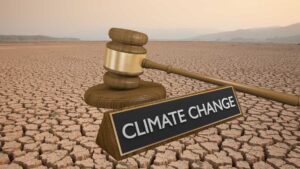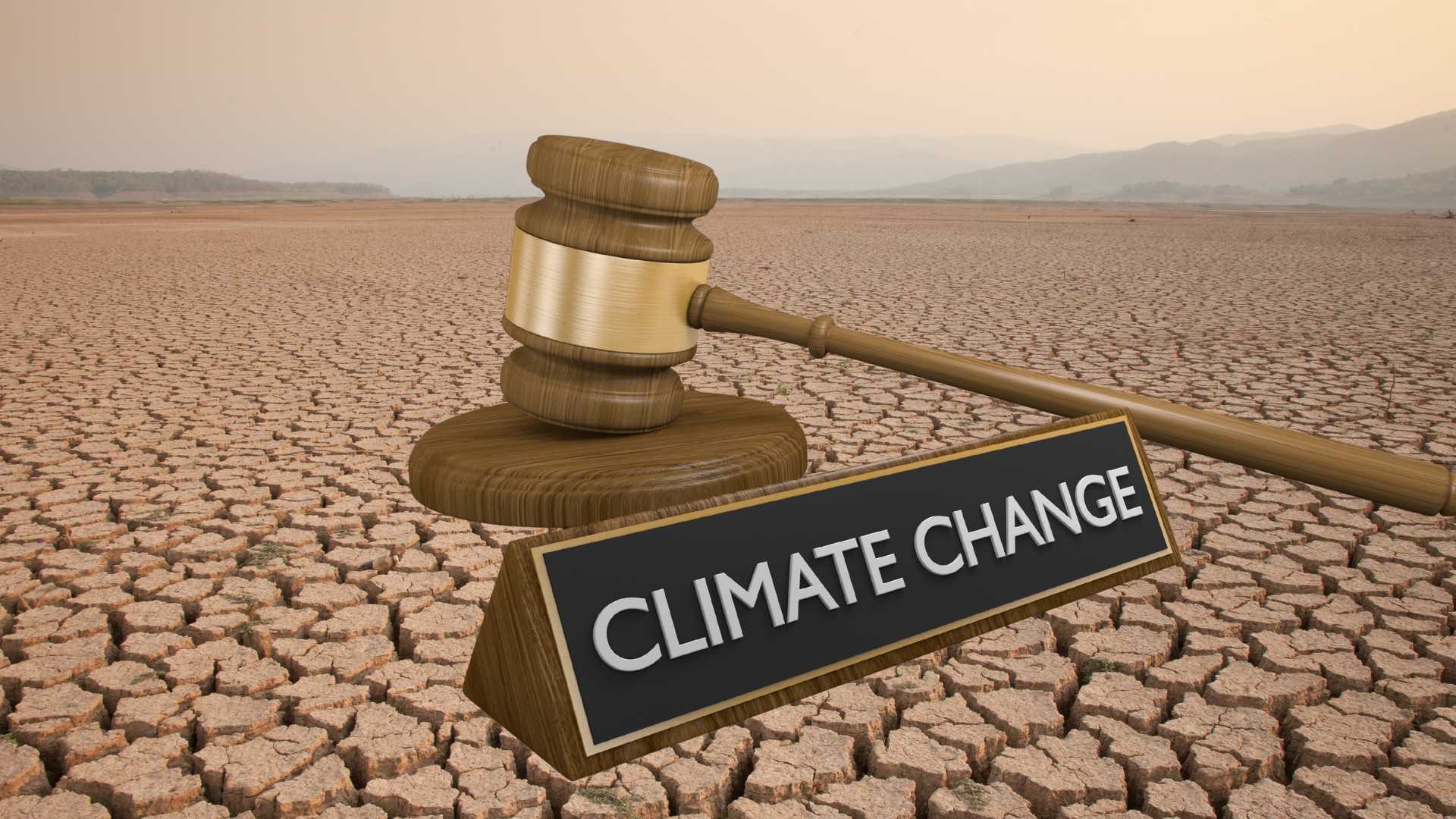 In the last one year of the union government’s environmental and climate performance, the negatives far outweigh a few positives. The Environmental Performance Index rank of India, at 176 out of 180 countries assessed and with a very low score of 27.6 out of 100, reflects this reality. Environmental quality is not a priority for the government, as shown by a total budget of RS.3413 crores for the Ministry of Environment Forests & Climate Change, or 0.07% of the annual union budget for 2025-26 !!
In the last one year of the union government’s environmental and climate performance, the negatives far outweigh a few positives. The Environmental Performance Index rank of India, at 176 out of 180 countries assessed and with a very low score of 27.6 out of 100, reflects this reality. Environmental quality is not a priority for the government, as shown by a total budget of RS.3413 crores for the Ministry of Environment Forests & Climate Change, or 0.07% of the annual union budget for 2025-26 !!
As seen in the past few years, environmental laws/rules were diluted, including Forest (conservation) Rules 2022, Forest Conservation (Amendment) Act 2023, continuation of Ex-post facto clearances (later struck down by the Supreme Court). Some improvements were seen in the National Clean Air Action Plan, with 41 of 97 high pollution target cities showing significant reduction in air pollutants, with some increase in the number of air quality monitoring stations. Two of the primary sources of air pollution, coal power plants and vehicles (particularly, Diesel burning ones), still are on a growth path. On river pollution, despite massive investments in “Namami Gange” and Yamuna Action Plans, most rivers including these two remain almost as polluted as they were earlier. Both industrial and agricultural effluents keep flowing into our rivers with little or no treatment. About 46% of India’s 605 major rivers are polluted, as per Central Pollution Control Board. Encroaching structures on river floodplains and important catchments continue to be built, by both official and private interests.
On the Climate front, renewable energy installations reached a high of 29.5 GW last year with Solar photovoltaic leading the charge but wind power and other sources falling way behind with low additions. As it’s going, India is very unlikely to achieve its stated target of 500 GW by 2030, with a present capacity of 220 GW.
On the adaptation, climate finance etc fronts, several announcements were made but very little action was taken. Increasingly, Indian govt also is going the tricky (if not fraudulent ) market mechanism route. The newly introduced ‘Green Credit scheme” is likely to increase this shift away from real verifiable climate actions.
Climate Governance:
India’s climate governance presents a paradox of progressive rhetoric and regressive actions. While committing to net-zero by 2070 with key targets of 500 GW of renewable energy by 2030, and 45% GHG emission reduction, recent policies reveal troubling contradictions. While India is already reliant on dirtier fossil fuel – coal which accounts for 47.4% of all the India installed capacities, the government added 4 GW of coal-fired capacity in 2024 and it has unveiled its plans to add almost 90 GW of coal-fired capacity by 2032. The union government passed the Energy Conservation (Amendment) Act 2022 where it introduced the carbon credit trading scheme and added a provision on obligations to use a minimum share of energy consumption from non-fossil sources. The Indian Carbon Market launched in 2024 is said to focus on emission intensity and not on absolute emissions caps. Experts warn that this will pave way to dubious offset projects, including tree plantations on forest rights lands.
Meanwhile, climate adaptation remains chronically underfunded with the National Adaptation Fund for Climate Change scheme receiving just ₹160 crore in 2024-25 to meet the cost of adaptation to climate change for the states and union territories of India that are particularly vulnerable to the adverse effects of climate change. This ecosystem of hollow market mechanisms such as carbon market, green credits, etc., creates regulatory escape hatches that sustain business-as-usual and facilitates expansion of fossil fuels and other destructive development.
Air and Water Pollution Issues:
The union government has articulated ambitious pollution control targets, notably renewing the National Clean Air Programme (NCAP) with a goal of 40% PM2.5 and PM10 reduction by 2026 across 131 non-attainment cities and extending Namami Gange Mission 2.0 with a budget of approximately ₹21,400 crore. However, implementation data reveals critical shortcomings. As of 2023, only 37 of 131 non-attainment cities had completed source apportionment studies essential for targeted action. Air quality monitoring remains sparse, with just 1,504 ambient air quality monitoring stations (manual monitoring stations – 963, and continuous monitoring stations – 541) covering vast urban and industrial areas. Additionally, another study revealed that 96% of NCAP cities monitored exceeded for PM10 levels above the National Ambient Air Quality Standards (NAAQS) in 2023, with Delhi’s PM2.5 (lower average of 101µg/m³) exceeds NAAQS on 57% of days and WHO standards on 100% of days monitored.
The recent Delhi’s air pollution mitigation plan 2025 emphasizes the discrepancies in the air pollution governance in the country. The plan unveiled by the chief minister of Delhi on 3rd June 2025, with key focus on stricter vehicle regulations, anti-smog guns and dust control, artificial rain (cloud seeding), green initiatives including planting 70 lakh trees, construction site regulations, and public awareness and health measures. However, it failed to address critical polluting sources – coal-based thermal power plants and diesel generators.
Same situation exists with water governance. Nearly ₹40,000 crore spent on Namami Gange until January 2025, of which a substantial amount of around ₹33,000 crore was spent on sewage infrastructure projects. According to a compliance report submitted by the Uttar Pradesh government on October 30, 2024, Prayagraj city’s 128.28 MLD of sewage remains untreated and flows directly into the Ganga. The compliance report also highlighted that there are 35 sewage treatment plants (STPs) operational across 11 Ganga districts and 34 of them failing to meet the prescribed standards for sewage treatment. Additionally, according to an affidavit submitted by CPCB on the status of water quality of River Ganga reveals that the Biological Oxygen Demand (BOD) at the domestic drains from the Prayagraj district ranged from 7.6-135 mg/l (safe limit for waterbodies: 5 mg/L).
Dilution of Environmental Laws and Framework:
India’s environmental framework has been progressively and systematically dismantled through legislative and procedural shortcuts. The Forest (Conservation) Rules, 2022 is one such erosion of legislation, where it permits private entities to acquire forest land for “developmental” projects without gram sabha consent, violating the Forest (Conservation) Amendment Rules, 2017 (Rule 6(3)(e)). This escalated with the Forest Conservation (Amendment) Act, 2023, which exempted border security and infrastructure projects within 100 km of international boundaries from forest clearances. This puts extensive areas of North Eastern India into existential crisis. Because, in India, the north-eastern states have the highest proportion of forest cover with respect to the total geographical area of the state. The 100 km distance from international borders would cover Mizoram has 85% forest cover, followed by Arunachal Pradesh (79%), Meghalaya (76%), Manipur (74%), Nagaland (74%), and Tripura (74%), Sikkim (47%), and Uttarakhand (45%). The union environment minister Bhupender Yadav, on 8th August 2024, informed Parliament that India had lost 173,396 hectares (1,733 square kilometres) of forest for development works.
The same pattern of dilutions of legal frameworks could be seen in India’s Petroleum industry. India is on track to increase its exploration acreage to 1 million square kilometers by 2030, with a 16% increase expected at the end of 2025. To facilitate this target and mission, the union government has simplified the approval process for exploration and production activities in the petroleum industry from 37 to just 18, of which nine are now available for self-certification. Additionally, it has also amended the Oilfields (Regulation and Development) Act in 2024 to ensure policy stability for the oil and gas producers, and enables a single license for all hydrocarbons.
Despite India witnessing one legal advancement where the Supreme Court struck down ex-post facto clearances in Common Cause v. Union of India (2024), in February 2025 the union government exempted white category of industries completely from the consent mechanism and other categories from Consent to Establish if the project or activity has obtained environmental clearance under the Environmental (Protection) Act, 1986. This is exclusively to “streamline and expedite the Environment Clearance process” and also to “promote Ease of Doing Business”.
Conclusion:
India’s environmental governance is at the crossroads where progressive rhetoric collides with regressive actions. From diluted forest laws to carbon markets, the state is enabling ecological plunder while greenwashing compliance. Unless enforcement matches ambition, and communities outweigh corporate interests, these policies will facilitate not a green transition, but a Great Acceleration of India’s ecological crisis.
This chapter is republished from ‘Promises & Reality 2025: Citizen Review of Year 1 of the NDA III Government’, a collaborative civil society report coordinated by Wada Na Todo Abhiyan.
Centre for Financial Accountability is now on Telegram and WhatsApp. Click here to join our Telegram channel and click here to join our WhatsApp channeland stay tuned to the latest updates and insights on the economy and finance.

